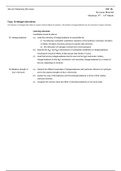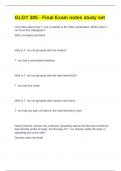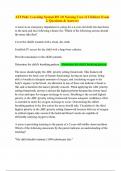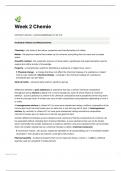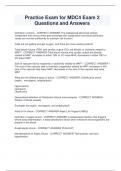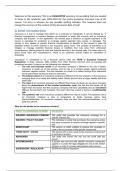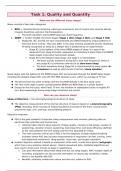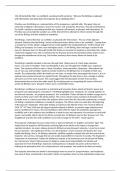Revision Material
Duration: 9th – 14th March
Topic 16 Halogen derivatives
The inclusion of a halogen atom within an organic molecule affects its reactivity. The reactions of halogenoalkanes are very important in organic chemistry.
Learning outcomes
Candidates should be able to:
16.1 Halogenoalkanes (a) recall the chemistry of halogenoalkanes as exemplified by:
(i) the following nucleophilic substitution reactions of bromoethane: hydrolysis, formation
of nitriles, formation of primary amines by reaction with ammonia
(ii) the elimination of hydrogen bromide from 2-bromopropane
(b) describe the SN1 and SN2 mechanisms of nucleophilic substitution in halogenoalkanes
including the inductive effects of alkyl groups (see Section 15.2(c))
(c) recall that primary halogenoalkanes tend to react via the SN2 mechanism; tertiary
halogenoalkanes via the SN1 mechanism; and secondary halogenoalkanes by a mixture of
the two, depending on structure
16.2 Relative strength of (a) interpret the different reactivities of halogenoalkanes (with particular reference to hydrolysis
the C-Hal bond and to the relative strengths of the C–Hal bonds)
(b) explain the uses of fluoroalkanes and fluorohalogenoalkanes in terms of their relative
chemical inertness
(c) recognise the concern about the effect of chlorofluoroalkanes on the ozone layer
, 16.1 Halogenoalkanes
(a) recall the chemistry of halogenoalkanes as exemplified by:
Halogenoalkanes are alkanes which contain a halogen atom covalently bonded to a carbon atom. When naming
halogenoalkanes, the prefix of the halogen (fluoro-/chloro-/bromo-/iodo-) is put before the alkane name with a number
to indicate which carbon the halogen is bonded to. For example 1-bromopropane, 3-chlorohexane and 2-iodopentane.
Structure and names
General formula CnH2n+1X, where X = F, Cl, Br or I
Types and naming of halogenoalkanes
Polarity of halogenoalkanes
ü halogen atoms are highly electronegative so that the halogen atoms in organic compounds will increase the polarity
of the molecules
Carbon and halogens have different electronegativities and halogenoalkanes have polar molecules with a polar C-X
bond.
chlorine is more electronegative than carbon electron flow from carbon to chlorine dipole produced
The polarity produces an electron-deficient carbon atom, 𝑐 !" which is important in the reactions od halogenoalkanes.
The polarity decreases from fluorine to iodine, reflecting the decrease in electronegativity down the halogen group.
Physical properties
- insoluble in water
- denser than water
- relatively higher boiling point / melting point than hydrocarbons (no hydrogen bonds)
(i) the following nucleophilic substitution reactions of bromoethane: hydrolysis, formation of nitriles, formation of
primary amines by reaction with ammonia
Nucleophiles are species that donate electrons. Common nucleophiles include: OH- CN- and NH3 .
The carbon-halogen bond in halogenoalkanes is polar because there is a large difference in electronegativity of these atoms. Halogens (particularly
chlorine and fluorine) are much more electronegative than carbon meaning that the bonding pair of electrons is drawn towards the halogen. The polarity of
this bond makes it relatively easy to break. When the bond breaks, a positive carbocation intermediate is formed which attracts nucleophiles.
Nucleophile – a substitution that donates long pair of electrons in a reaction (electron pair donor)
e.g. :OH- , :H2O, :Cl–, :Br–, :I–, :NH3–, :CN–
R-X + H2O → R-OH + HX (NaOH, reflux)
1. Substitution of reactions with aqueous alkali, OH– (aq).
CH3CH2Br + NaOH → CH3CH2OH + NaBr
Bromoethane ethanol
OR CH3CH2Br + OH– → CH3CH2OH + Br–

